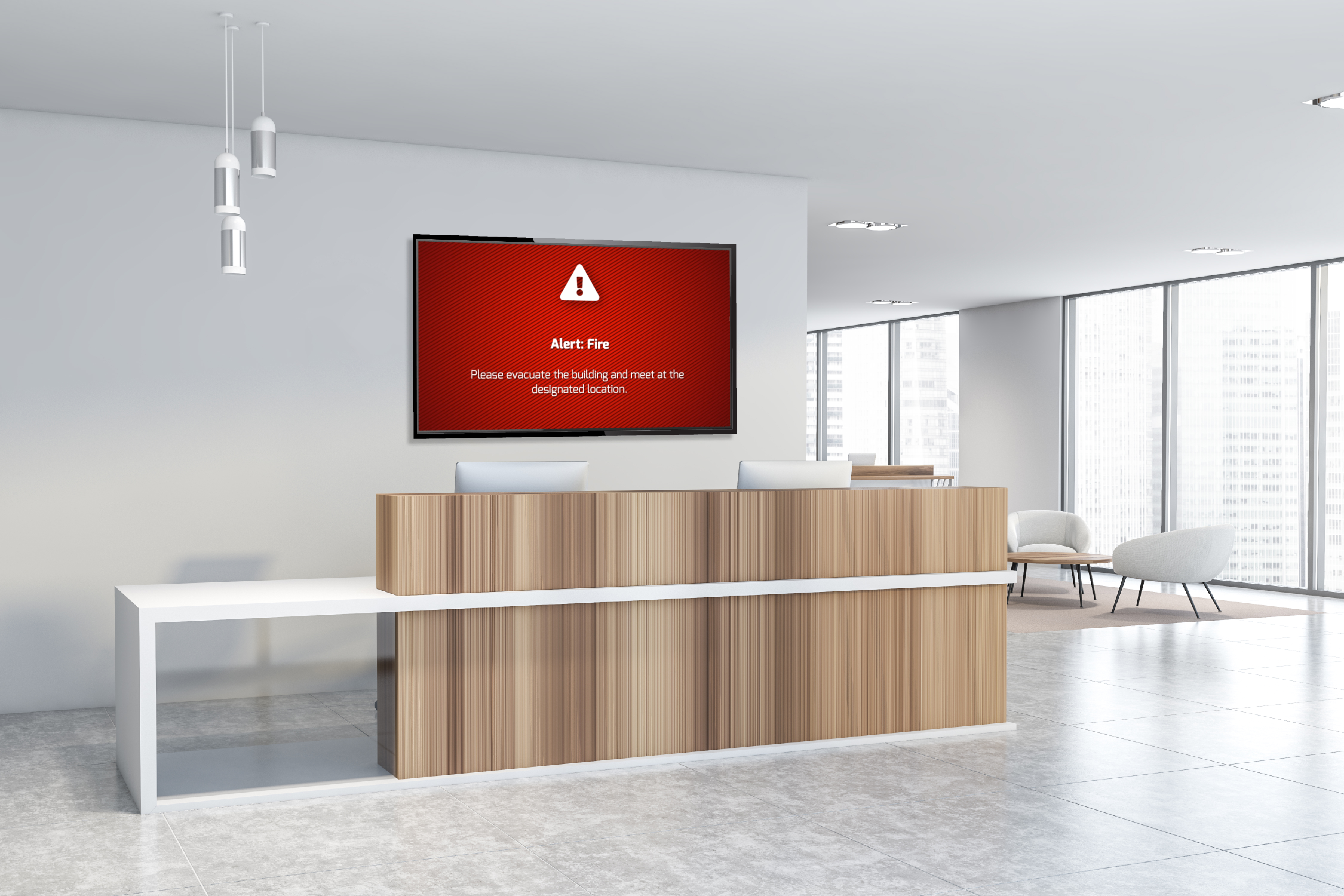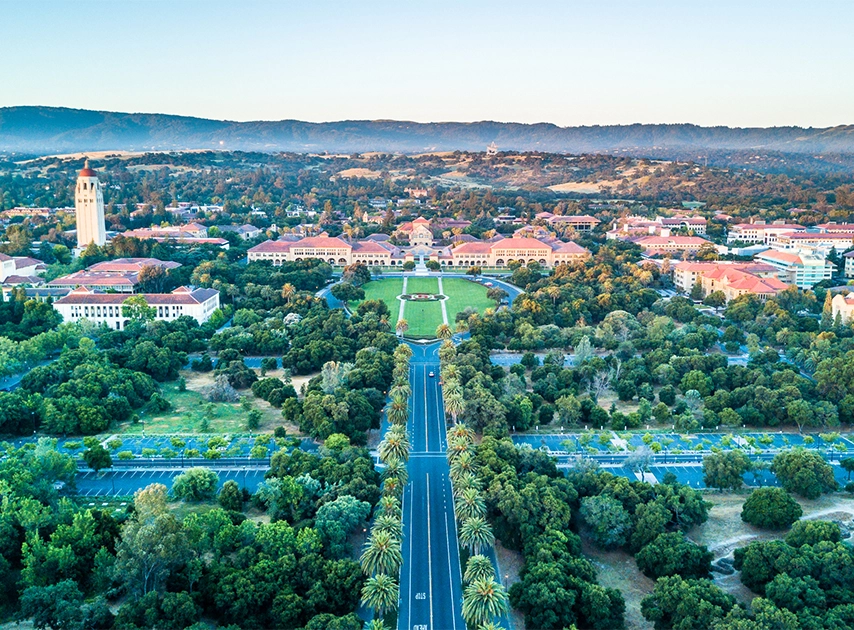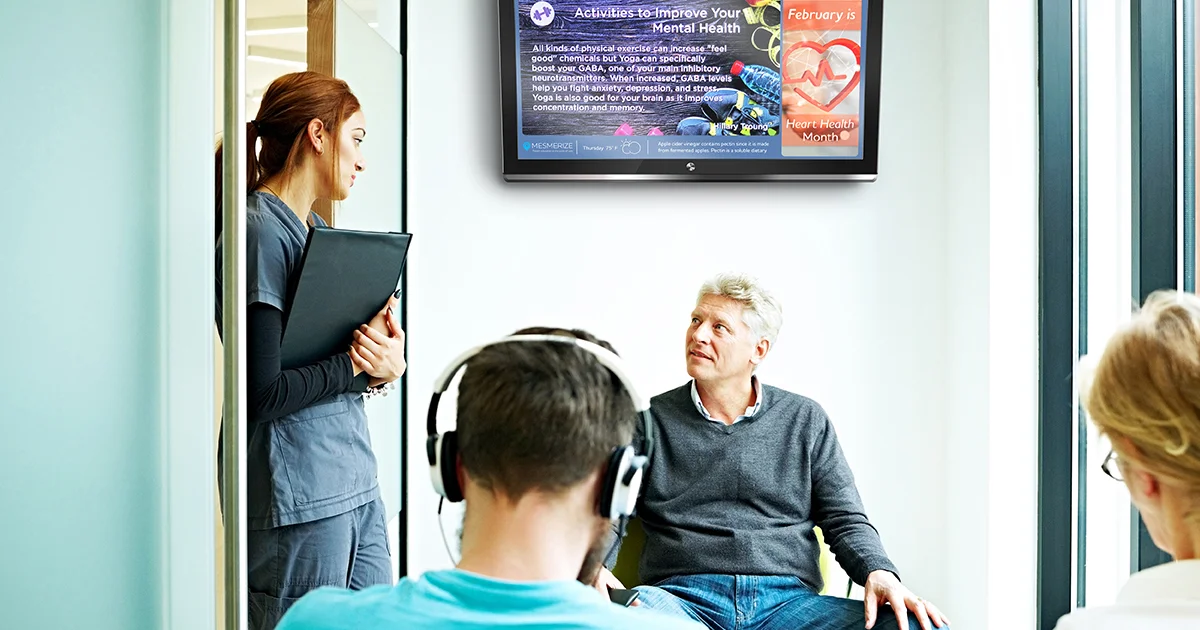How the Digital Signage Industry Handled the Pandemic and Digital Signage in the Future
WRITTEN BY: TelemetryTV, 03-22-2022

The Digital Signage Industry: Past, Pandemic, and Future
Digital signage’s dynamic, eye-catching nature has played a vital role throughout the pandemic. As a result, the nature of digital signage has evolved to accommodate some now critical functions. Let’s take a look at how digital signage has helped reduce the impact of the current global pandemic and what we can expect for the future of digital signage.
How Digital Signage Grew During the Pandemic

The global coronavirus pandemic left a lot of industries in sudden need of a visual communications solution. On-site protocols to mitigate the risk of infection needed to be posted at the entrances to buildings and in various locations around the premises.
Digital signage filled that need, arguably better than any other medium. That’s because digital signage provides a hands-off way to deliver detailed content at a glance. It’s one of the most efficient tools that combated the spread of COVID-19.
It offered a variety of functions that enabled the digital signage industry as whole to thrive despite the global impact of the pandemic. Here are some examples:
QR Codes on Digital Displays
QR codes became a bigger part of people's lives with their touchless transmission of information. Digital signs and devices of various kinds were a main way for businesses to present these to patrons.
Displaying Terms of Entry and Protocols
Clearly displaying rules to enter an area, such as wearing a mask, social distancing, and not entering if sick, became absolutely essential. Digital signs were one of the top ways this information was given.
Providing Reminders to Employees and Visitors
Once inside a building, people needed to be reminded to sanitize their hands frequently, and maintain safe distances. This included everyone in the building, even management.
Temperature Check Kiosks
Kiosks that display who has a fever by way of a digital thermometer allowed security personnel to see who wasn’t fit to enter a building before they ever set foot through the doorway.
Self-Check in Kiosks
As long as there’s hand sanitizer to go along with it, touchscreen kiosks have been a great way to mitigate the risk of transmitting COVID-19. It allows businesses to limit face to face interactions. Customers can accomplish a wide variety of tasks without the need to make any sort of contact with someone else.
The Progression of Digital Signage: Problems and Solutions

Digital signage wasn’t always as user friendly as it is now. The pandemic expedited some of those improvements, but it’s been a long process. Over the years, digital signage technology has made some major strides and eliminated problems that made it inaccessible to some.
First off, you would have needed a technician to manage your digital signage setup in the past. These days, novice users have no problem navigating their setup with a new and improved cloud-based CMS (content management system). Especially in times like a pandemic, this ease of use made digital signage way more plausible for businesses big and small.
Put simply, the software has reached a point of it being as simple as possible to use and manage—including having native apps for content creation with drag and drop functionality.
Resolutions have come a long way as well. The digital screens of yesteryear weren’t exactly impressive in terms of detail. With UHD being the norm now, there is a significant difference in picture quality compared to posters.
And although digital screens these days are even brighter and more luminous than the ones used years ago, they are less power consumptive, meaning they’re cheaper to operate.
In pretty much every way, digital signage has progressed to the point of it being the best option for any sort of signage. And it is continuing to progress year after year.
The Future of Digital Signage
Resolutions are one area that will only continue to improve as the years go on. We can expect 8K to become the norm soon enough, and more advanced technologies that provide a truer color representation to be standard throughout the industry.
Technologies like QLED or MicroLED will be used more commonly and will be more readily available, and at affordable prices.
We can expect developments in the software as well, with compatibility to new apps—some maybe not even created yet—and more powerful tools. Things will be even more streamlined, and creating stunning customized content will be even easier than it already is.
IoT and digital signage will likely see a pairing as well. In some industries, they already are. IoT is part of an inevitable shift toward automating and digitizing nearly everything we interact with—and digital signage will certainly play a prominent role.
We will more commonly see the use of haptics in digital signs. People will actually have stimuli on their fingertips as they interact with screens.
Facial recognition in digital signage is already being used in a variety of ways, but this will become more common as the years go in.
The future of digital signage will be fascinating to say the least. As digital signage future trends progress, businesses and people will be able to benefit more and more.
Get Started with Digital Signage Now
If your business could be improved by adopting a network of digital signs, try a free trial of TelemetryTV now for free, no string attached.











